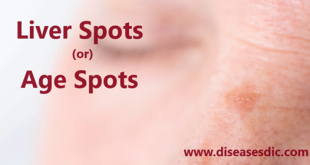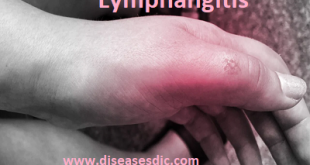What is lymphoma?
Lymphoma is a type of blood cancer that develops when white blood cells called lymphocytes grow out of control. Lymphocytes are part of your immune system. They travel around your body in your lymphatic system, helping you fight infections. Your lymphatic system runs throughout your body, similar to your blood circulatory system, carrying a fluid called lymph. The fluid passes through lymph nodes (glands), which are spread throughout your body.
If you have lymphoma, your lymphocytes divide in an abnormal way or do not die when they should. The abnormal lymphocytes build-up, usually in lymph nodes in your armpits, neck, or groin. However, they can collect in almost any part of your body.
Stages of lymphoma
Both NHL and HL can be classified into four stages. The state of lymphoma is determined by where the cancer is and how far it has or has not spread.
- Stage 1. Cancer is in one lymph node or one organ cite.
- Stage 2. Cancer is in two lymph nodes near to one another and on the same side of the body, or the cancer is in one organ and nearby lymph nodes.
- Stage 3. At this point, cancer is in lymph nodes on both sides of the body and in multiple lymph nodes.
- Stage 4. Cancer can be in an organ and spread beyond nearby lymph nodes. As NHL progresses, it may begin to spread. The most common sites for advanced NHL include the liver, bone marrow, and lungs.
Types of lymphoma
Lymphoma is basically divided into two categories.
- Non-Hodgkin lymphoma
- Hodgkin Lymphoma
Non-Hodgkin lymphoma (NHL)
Non-Hodgkin lymphoma is the most common form of blood cancer or liquid cancer. The disease forms in the bloodstream or lymph system, a network of vessels, nodes, and organs that carry immune cells throughout the body.
Hodgkin Lymphoma
Hodgkin lymphoma (HL) is a type of lymphoma in which cancer originates from a specific type of white blood cells called lymphocytes. Symptoms may include fever, night sweats, and weight loss. Often there will be non-painful enlarged lymph nodes in the neck, under the arm, or in the groin.
Pathophysiology
As with many malignancies, and particularly malignancies in children, the pathophysiology of lymphoma is not well understood. Development is multi-factorial, with infection, genetic factors, and environmental exposures all potentially involved. In adults, lifestyle factors such as obesity, smoking, and alcohol intake are all associated with increased lymphoma risk but it is less clear what, if any, part they play in the development of childhood disease.
Causes and risk factors
Lymphoma can develop when lymphocytes (white blood cells that fight infection) grow out of control. This is caused by genetic changes in the cells that mean they no longer ‘listen’ to signals that control their growth and death. Researchers are finding out more about the genetic changes in lymphoma, and this is leading to new treatments. In most cases, it is not known what actually causes these changes. Most genetic changes probably happen by chance. Several genetic changes are usually needed before lymphoma develops. This is known as the ‘multi-hit theory’.
You might be more at risk if you:
- Are in your 60s or older for NHL
- Are between 15 and 40 or older than 55 for HL
- Are male, although certain subtypes may be more common in females
- Have a weak immune system from HIV/AIDS, an organ transplant, or because you were born with an immune disease
- Have an immune system disease such as rheumatoid arthritis, Sjögren’s syndrome, lupus, or celiac disease
- Have been infected with a virus such as Epstein-Barr, hepatitis C, or human T-cell leukemia/lymphoma (HTLV-1)
- Have a close relative who had lymphoma
- Were exposed to benzene or chemicals that kill bugs and weeds
- Were treated for Hodgkin or non-Hodgkin lymphoma in the past
- Were treated for cancer with radiation
What are the symptoms and signs?
Lymphoma may not always cause symptoms in its early stages. Instead, a doctor may discover enlarged lymph nodes during a physical examination. These may feel like small, soft nodules under the skin. A person may feel the lymph nodes in the:
- Neck
- Upper chest
- Armpit
- Stomach
- Groin
Likewise, many of the symptoms of early lymphoma are not specific. That makes them easy to overlook. These common early symptoms include:
- Bone pain
- Cough
- Fatigue
- Enlarged spleen
- Fever
- Night sweats
- Pain when drinking alcohol
- Itchy rash
- Rash in skin folds
- Shortness of breath
- Skin itching
- Stomach pain
- Unexplained weight loss
Because the symptoms are often easily overlooked, it can be difficult to detect and then diagnose it in an early stage. It’s important to know how the symptoms may begin to change as cancer worsens.
Complications of non-Hodgkin lymphoma
Being immunocompromised (having a weakened immune system) is a common complication of lymphoma treatment. Even if your lymphatic system is restored to normal, many of the medications that treat NHL weaken your immune system.
This means you are more vulnerable to infections, and there is an increased risk of developing serious complications from infections. You may be advised to take regular doses of antibiotics to prevent infections occurring in the early stages after treatment. Your immune system will usually recover in the months and years after treatment.
Complications of Hodgkin Lymphoma
Some of the main complications of Hodgkin lymphoma are described below.
Weakened immune system: Having a weakened immune system is a common complication of Hodgkin lymphoma and it can become more severe while you’re being treated.
Infertility: Chemotherapy and radiotherapy for Hodgkin lymphoma can cause infertility. This is sometimes temporary, but it can be permanent.
Second cancers: People who have had Hodgkin lymphoma are more likely to get lymphoma, leukemia, or other cancers in the future. Chemotherapy and radiotherapy further increase this risk. “Second cancers”, such as breast cancer or lung cancer, usually develop more than 10 years after you’re treated for Hodgkin lymphoma.
Diagnosis
A needle suctioning out liquid bone marrow from the hipbone
Bone marrow exam Open pop-up dialog box
Tests and procedures used to diagnose lymphoma include:
Physical exam. Your doctor checks for swollen lymph nodes, including in your neck, underarm, and groin, as well as a swollen spleen or liver.
Removing a lymph node for testing. Your doctor may recommend a lymph node biopsy procedure to remove all or part of a lymph node for laboratory testing. Advanced tests can determine if lymphoma cells are present and what types of cells are involved.
Blood tests. Blood tests to count the number of cells in a sample of your blood can give your doctor clues about your diagnosis.
Removing a sample of bone marrow for testing. A bone marrow aspiration and biopsy procedure involve inserting a needle into your hipbone to remove a sample of bone marrow. The sample is analyzed to look for lymphoma cells.
Imaging tests. Your doctor may recommend imaging tests to look for signs of lymphoma in other areas of your body. Tests may include CT, MRI, and positron emission tomography (PET).
Other tests and procedures may be used depending on your situation.
Many types of lymphoma exist and knowing exactly which type you have is key to developing an effective treatment plan. Research shows that having a biopsy sample reviewed by an expert pathologist improves the chances for an accurate diagnosis. Consider getting a second opinion from a specialist who can confirm your diagnosis.
Treatment
The course of treatment depends on the type of lymphoma a person has and the stage it has reached.
Indolent, or slow-growing lymphoma may not need treatment. Watchful waiting may be enough to make sure cancer does not spread. If treatment is necessary, it may involve the following:
Biologic therapy: This is a drug treatment that stimulates the immune system to attack cancer. The drug achieves this by introducing living microorganisms into the body.
Antibody therapy: A medical professional inserts synthetic antibodies into the bloodstream. These respond to cancer’s toxins.
Chemotherapy: A healthcare team administers aggressive drug treatment to target and kill cancer cells.
Radioimmunotherapy: This delivers high powered radioactive doses directly into cancerous B cells and T-cells to destroy them.
Radiation therapy: A doctor may recommend this type of therapy to target and destroy small areas of cancer. Radiation therapy uses concentrated doses of radiation to kill cancerous cells.
Stem cell transplantation: This can help restore damaged bone marrow following high dose chemotherapy or radiation therapy.
Steroids: A doctor may inject steroids to treat lymphoma.
Surgery: A surgeon may remove the spleen or other organs after the lymphoma has spread. However, a cancer specialist, or oncologist, will more commonly request surgery to obtain a biopsy.
Prevention
Many of the risk factors are outside a person’s direct control. The following factors, however, can be controlled:
- Avoiding behaviors that increase the chance of getting AIDS and hepatitis C infections, both of which weaken the immune system.
- Avoiding unnecessary exposure to radiation.
- Maintaining a normal weight and eating a healthy diet.
- Rarely, some women develop lymphoma in the scar tissue around breast implants. The decision to get breast implants should be well-thought-out.
 Diseases Treatments Dictionary This is complete solution to read all diseases treatments Which covers Prevention, Causes, Symptoms, Medical Terms, Drugs, Prescription, Natural Remedies with cures and Treatments. Most of the common diseases were listed in names, split with categories.
Diseases Treatments Dictionary This is complete solution to read all diseases treatments Which covers Prevention, Causes, Symptoms, Medical Terms, Drugs, Prescription, Natural Remedies with cures and Treatments. Most of the common diseases were listed in names, split with categories.







